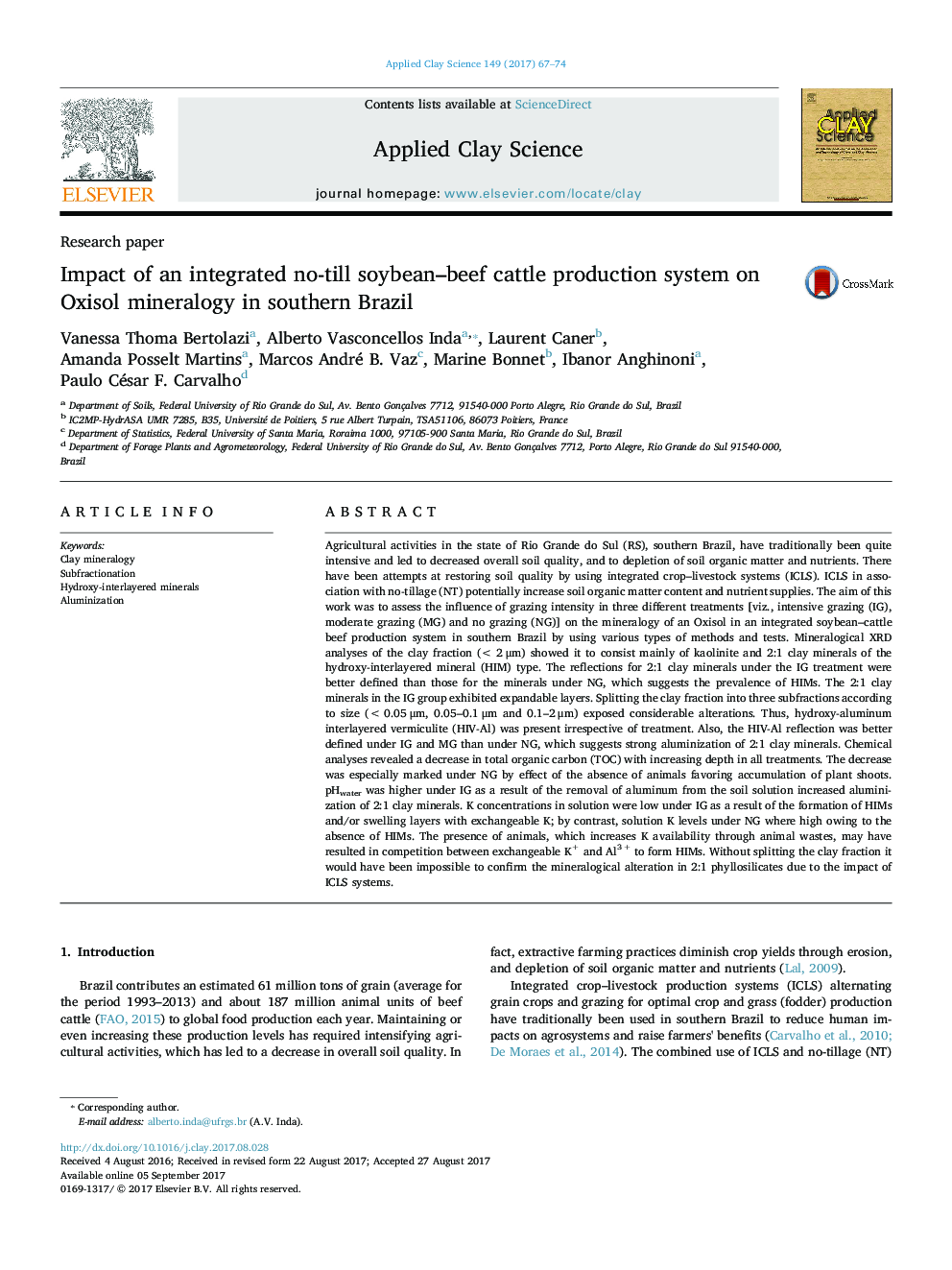| کد مقاله | کد نشریه | سال انتشار | مقاله انگلیسی | نسخه تمام متن |
|---|---|---|---|---|
| 5468669 | 1519039 | 2017 | 8 صفحه PDF | دانلود رایگان |

- Integrated crop-livestock systems increase soil organic C and nutrient supplies.
- Integrated crop-livestock systems can affect soil mineralogy.
- It is highly advisable to fractionate clay when studying 2:1 phyllosilicates.
Agricultural activities in the state of Rio Grande do Sul (RS), southern Brazil, have traditionally been quite intensive and led to decreased overall soil quality, and to depletion of soil organic matter and nutrients. There have been attempts at restoring soil quality by using integrated crop-livestock systems (ICLS). ICLS in association with no-tillage (NT) potentially increase soil organic matter content and nutrient supplies. The aim of this work was to assess the influence of grazing intensity in three different treatments [viz., intensive grazing (IG), moderate grazing (MG) and no grazing (NG)] on the mineralogy of an Oxisol in an integrated soybean-cattle beef production system in southern Brazil by using various types of methods and tests. Mineralogical XRD analyses of the clay fraction (< 2 μm) showed it to consist mainly of kaolinite and 2:1 clay minerals of the hydroxy-interlayered mineral (HIM) type. The reflections for 2:1 clay minerals under the IG treatment were better defined than those for the minerals under NG, which suggests the prevalence of HIMs. The 2:1 clay minerals in the IG group exhibited expandable layers. Splitting the clay fraction into three subfractions according to size (< 0.05 μm, 0.05-0.1 μm and 0.1-2 μm) exposed considerable alterations. Thus, hydroxy-aluminum interlayered vermiculite (HIV-Al) was present irrespective of treatment. Also, the HIV-Al reflection was better defined under IG and MG than under NG, which suggests strong aluminization of 2:1 clay minerals. Chemical analyses revealed a decrease in total organic carbon (TOC) with increasing depth in all treatments. The decrease was especially marked under NG by effect of the absence of animals favoring accumulation of plant shoots. pHwater was higher under IG as a result of the removal of aluminum from the soil solution increased aluminization of 2:1 clay minerals. K concentrations in solution were low under IG as a result of the formation of HIMs and/or swelling layers with exchangeable K; by contrast, solution K levels under NG where high owing to the absence of HIMs. The presence of animals, which increases K availability through animal wastes, may have resulted in competition between exchangeable K+ and Al3 + to form HIMs. Without splitting the clay fraction it would have been impossible to confirm the mineralogical alteration in 2:1 phyllosilicates due to the impact of ICLS systems.
Journal: Applied Clay Science - Volume 149, 1 December 2017, Pages 67-74